#Himalayan Natives
Text
oh my God it should be illegal to sell or plant noxious invasive plants as ornamentals
#just pulled so much english ivy from my moms fence line#and holly spouts#and Himalayan blackberries#like anything else im coming after corperations for#but planting the most invasive plants bc theyre pretty?#shut the fuck up#esp holly bc tall oregon grape is native to my region and looks almost exactly the same#angry solarpunk time
9 notes
·
View notes
Note
it's Asian American and Pacific Islander Heritage Month
That's true!
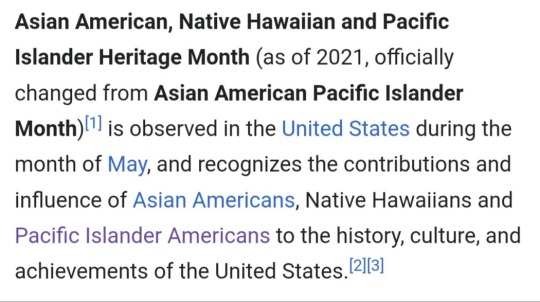









#asian american native hawaiian and pacific islander heritage month#is there a short version#aanhpi month#ask#poptropica#dragon cove trader#poptropica navigator#bonsai wu#himalayan monks#poptropica basho#poptropica shogun#mya hartman wong#kevin hartman wong#poptropica mrs. wong#the yokozuna#poptropica geishas#skullduggery island#red dragon island#cryptids island#motm#mystery of the map#poptropica graphic novels#asian heritage month
9 notes
·
View notes
Text
man i think what a lot of people might misunderstand about invasive species is
A) it's not just about removal. You can't just kill a bunch of invasive species and then dust your hands off and call it a day. in the case of plants especially, you need something in its place. A lot of invasive species aren't invasive so much as adapted to city environments--because a city is an ecosystem too.
B) on that note, some invasive species are here to stay. like, their spread can be controlled, populations maintained, but the goal in the end would be to let the rest of the ecosystem catch up, for a balance to be found, because it would be impossible to eliminate them.
basically every invasive species in every location is on case by case basis. invasive species elimination is a PIECE of larger scale ecosystem maintenance. but still when you DO get to rip n tear it is fun.
#shout out to my flock of house sparrows you're adorable#and a very good example of an invasive species that's really just adapted to human environments#anyways im not a professional invasive species guy im just thinking out loud#this reminds me i should remove the himalayan balsam growing in the yard#i have many a native plants planned so im sure ill have something that will enjoy it#over there
13 notes
·
View notes
Text



Purple wildflowers
1) Himalayan Balsam (invasive)
2) Wild Bergamot (native)
3) Wild teasel (invasive)
#flowers#wildflowers#canon canada#eosr6#hiking#himalayan balsam#wild bergamot#teasel#invasive species#native species#canon photography#original photography#ontario#bloom
2 notes
·
View notes
Photo








Identifying Invasive vs Native Blackberries in the Coastal PNW
Pictured on the left is our native blackberry, Rubus ursinus or trailing blackberry. Rubus ursinus has more slender leaves which grow in groups of 3. The invasive himalayan blackberry (Rubus armenaicus) has fatter leaves which grow in groups of 5. (All pictures on the right are himalayan blackberry)
Rubus ursinus flowers have thin petals which do not touch each other, while the invasive blackberry has a flower that resembles a white cherry blossom or apple blossom.
Rubus ursinus stems are round with a blueish hue to them, while the invasive blackberry usually has thicker stems which are hexagonal and have a reddish tone to them, especially in full sun.
Rubus ursinus trails politely on the ground and has small thorns, while the invasive blackberry forms tall thickets and has more aggressive thorns.
24 notes
·
View notes
Text
while a/b/o fic 99.9999% of the time just does not appeal to me at all and the tag is a sign to skip a particular fic i Will admit that it feels different when i encounter a/b/o fic in the supernatural ao3 tag compared to encountering it anywhere else. yeah you weird little fandom that’s exactly what you’re supposed to be doing
#am i going to read it though? probably not#it's like. i grew up with non native himalayan blackberries in the backyard right. it's like if i suddenly decided to visit armenia and#saw them and then remembered that oh right. this is where you're from.#actually that's a terrible metaphor because blackberries are delicious and a/b/o isn't anything like an invasive plant#it's like if there was . a decorative flower a bunch of people like and have in their gardens but my hayfever doesn't like it and i think#it's a little bit ugly so i don't have any in my garden#and then i go to a place famous for having this flower all over town and it's like well i still don't LIKE you much but i should have#expected this probably and if you're gonna be anywhere it might as well be here#none of this makes any sense. forget the plant metaphors. i may be a little loopy#natural soup
2 notes
·
View notes
Text
Good News - June 8-14
Like these weekly compilations? Tip me at $Kaybarr1735! And if you tip me and give me a way to contact you, at the end of the month I'll send you a link to all of the articles I found but didn't use each week!
1. Rare foal born on estate for first time in 100 years

“The Food Museum at Abbot's Hall in Stowmarket, Suffolk, is home to a small number of Suffolk Punch horses - a breed considered critically endangered by the Rare Breeds Survival Trust. A female foal was born on Saturday and has been named Abbots Juno to honour the last horse born at the museum in 1924. [...] Juno is just one of 12 fillies born so far this year in the country and she could potentially help produce more of the breed in the future.”
2. The cement that could turn your house into a giant battery

“[Scientists] at Massachusetts Institute of Technology (MIT) have found a way of creating an energy storage device known as a supercapacitor from three basic, cheap materials – water, cement and a soot-like substance called carbon black. [... Supercapacitators] can charge much more quickly than a lithium ion battery and don't suffer from the same levels of degradation in performance. [... Future applications of this concrete might include] roads that store solar energy and then release it to recharge electric cars wirelessly as they drive along a road [... and] energy-storing foundations of houses.”
3. New road lights, fewer dead insects—insect-friendly lighting successfully tested

“Tailored and shielded road lights make the light source almost invisible outside the illuminated area and significantly reduces the lethal attraction for flying insects in different environments. [...] The new LED luminaires deliver more focused light, reduce spill light, and are shielded above and to the side to minimize light pollution. [... In contrast,] dimming the conventional lights by a factor of 5 had no significant effect on insect attraction.”
4. When LGBTQ health is at stake, patient navigators are ready to help

“[S]ome health care systems have begun to offer guides, or navigators, to get people the help they need. [... W]hether they're just looking for a new doctor or taking the first step toward getting gender-affirming care, "a lot of our patients really benefit from having someone like me who is there to make sure that they are getting connected with a person who is immediately going to provide a safe environment for them." [... A navigator] also connects people with LGBTQ community organizations, social groups and peer support groups.”
5. Tech company to help tackle invasive plant species

“Himalayan balsam has very sugary nectar which tempts bees and other pollinators away from native plants, thereby preventing them from producing seed. It outcompetes native plant species for resources such as sunlight, space and nutrients. [...] The volunteer scheme is open to all GWT WilderGlos users who have a smartphone and can download the Crowdorsa app, where they can then earn up to 25p per square meter of Balsam removed.”
6. [Fish & Wildlife] Service Provides Over $14 Million to Benefit Local Communities, Clean Waterways and Recreational Boaters
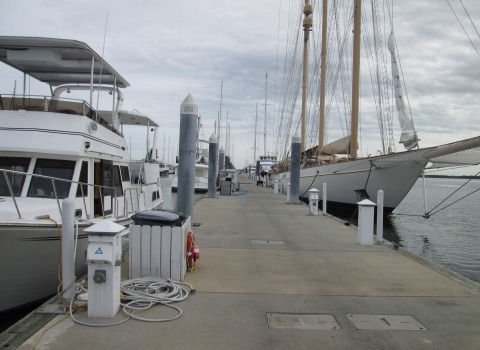
“The U.S. Fish and Wildlife Service is distributing more than $14 million in Clean Vessel Act grants to improve water quality and increase opportunities for fishing, shellfish harvests and safe swimming in the nation’s waterways. By helping recreational boaters properly dispose of sewage, this year’s grants will improve conditions for local communities, wildlife and recreational boaters in 18 states and Guam.”
7. Bornean clouded leopard family filmed in wild for first time ever

“Camera traps in Tanjung Puting National Park in Indonesian Borneo have captured a Bornean clouded leopard mother and her two cubs wandering through a forest. It's the first time a family of these endangered leopards has been caught on camera in the wild, according [to] staff from the Orangutan Foundation who placed camera traps throughout the forest to learn more about the elusive species.”
8. Toy library helps parents save money 'and the planet'

“Started in 2015 by Annie Berry, South Bristol's toy library aims to reduce waste and allow more children access to more - and sometimes expensive - toys. [...] Ms Berry partnered with the St Philips recycling centre on a pilot project to rescue items back from landfill, bringing more toys into the library. [...] [P]eople use it to support the environment, take out toys that they might not have the space for at home or be able to afford, and allow children to pick non-gender specific toys.”
9. Chicago Receives $3M Grant to Inventory Its Trees and Create Plan to Manage City’s Urban Forest

“The Chicago Park District received a $1.48 million grant [“made available through the federal Inflation Reduction Act”] to complete a 100% inventory of its estimated 250,000 trees, develop an urban forestry management plan and plant 200 trees in disadvantaged areas with the highest need. As with the city, development of the management plan is expected to involve significant community input.”
10. Strong Public Support for Indigenous Co-Stewardship Plan for Bears Ears National Monument
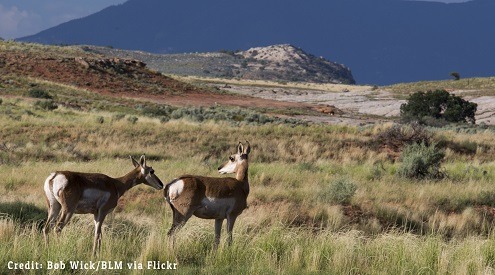
“[The NFW has a] plan to collaboratively steward Bears Ears National Monument to safeguard wildlife, protect cultural resources, and better manage outdoor recreation. The plan was the result of a two-year collaboration among the five Tribes of the Bears Ears Inter-Tribal Coalition and upholds Tribal sovereignty, incorporates Traditional Ecological Knowledge, and responsibly manages the monument for hunting, fishing, and other outdoor recreation while ensuring the continued health of the ecosystem.”
June 1-7 news here | (all credit for images and written material can be found at the source linked; I don’t claim credit for anything but curating.)
#hopepunk#good news#nature#horse#rare breed#energy storage#clean energy#biodiversity#street lights#lgbtq#health#native plants#invasive species#incentive#fws#water#fishing#swimming#clouded leopard#indonesia#library#kids toys#interdependence#bristol#uk#funding#native#outdoor recreation#animals#wildlife
735 notes
·
View notes
Text
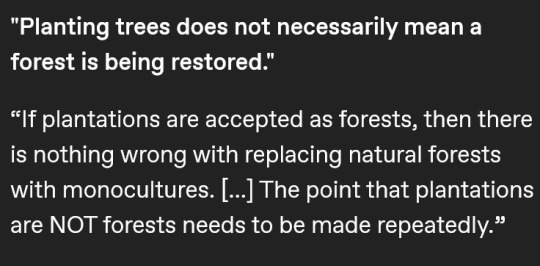
Despite its green image, Ireland has surprisingly little forest. [...] [M]ore than 80% of the island of Ireland was [once] covered in trees. [...] [O]f that 11% of the Republic of Ireland that is [now] forested, the vast majority (9% of the country) is planted with [non-native] spruces like the Sitka spruce [in commercial plantations], a fast growing conifer originally from Alaska which can be harvested after just 15 years. Just 2% of Ireland is covered with native broadleaf trees.
Text by: Martha O’Hagan Luff. “Ireland has lost almost all of its native forests - here’s how to bring them back.” The Conversation. 24 February 2023. [Emphasis added.]
---
[I]ndustrial [...] oil palm plantations [...] have proliferated in tropical regions in many parts of the world, often built at the expense of mangrove and humid forest lands, with the aim to transform them from 'worthless swamp' to agro-industrial complexes [...]. Another clear case [...] comes from the southernmost area in the Colombian Pacific [...]. Here, since the early 1980s, the forest has been destroyed and communities displaced to give way to oil palm plantations. Inexistent in the 1970s, by the mid-1990s they had expanded to over 30,000 hectares. The monotony of the plantation - row after row of palm as far as you can see, a green desert of sorts - replaced the diverse, heterogenous and entangled world of forest and communities.
Text by: Arturo Escobar. "Thinking-Feeling with the Earth: Territorial Struggles and the Ontological Dimension of the Epistemologies of the South." Revista de Antropologia Iberoamericana Volume 11 Issue 1. 2016. [Emphasis added.]
---
But efforts to increase global tree cover to limit climate change have skewed towards erecting plantations of fast-growing trees [...] [because] planting trees can demonstrate results a lot quicker than natural forest restoration. [...] [But] ill-advised tree planting can unleash invasive species [...]. [In India] [t]o maximize how much timber these forests yielded, British foresters planted pines from Europe and North America in extensive plantations in the Himalayan region [...] and introduced acacia trees from Australia [...]. One of these species, wattle (Acacia mearnsii) [...] was planted in [...] the Western Ghats. This area is what scientists all a biodiversity hotspot – a globally rare ecosystem replete with species. Wattle has since become invasive and taken over much of the region’s mountainous grasslands. Similarly, pine has spread over much of the Himalayas and displaced native oak trees while teak has replaced sal, a native hardwood, in central India. Both oak and sal are valued for [...] fertiliser, medicine and oil. Their loss [...] impoverished many [local and Indigenous people]. [...]
India’s national forest policy [...] aims for trees on 33% of the country’s area. Schemes under this policy include plantations consisting of a single species such as eucalyptus or bamboo which grow fast and can increase tree cover quickly, demonstrating success according to this dubious measure. Sometimes these trees are planted in grasslands and other ecosystems where tree cover is naturally low. [...] The success of forest restoration efforts cannot be measured by tree cover alone. The Indian government’s definition of “forest” still encompasses plantations of a single tree species, orchards and even bamboo, which actually belongs to the grass family. This means that biennial forest surveys cannot quantify how much natural forest has been restored, or convey the consequences of displacing native trees with competitive plantation species or identify if these exotic trees have invaded natural grasslands which have then been falsely recorded as restored forests. [...] Planting trees does not necessarily mean a forest is being restored. And reviving ecosystems in which trees are scarce is important too.
Text by: Dhanapal Govindarajulu. "India was a tree planting laboratory for 200 years - here are the results." The Conversation. 10 August 2023. [Emphasis added.]
---
Nations and companies are competing to appropriate the last piece of available “untapped” forest that can provide the most amount of “environmental services.” [...] When British Empire forestry was first established as a disciplinary practice in India, [...] it proscribed private interests and initiated a new system of forest management based on a logic of utilitarian [extraction] [...]. Rather than the actual survival of plants or animals, the goal of this forestry was focused on preventing the exhaustion of resource extraction. [...]
Text by: Daniel Fernandez and Alon Schwabe. "The Offsetted." e-flux Architecture (Positions). November 2013. [Emphasis added.]
---
At first glance, the statistics tell a hopeful story: Chile’s forests are expanding. […] On the ground, however, a different scene plays out: monocultures have replaced diverse natural forests [...]. At the crux of these [...] narratives is the definition of a single word: “forest.” [...] Pinochet’s wave of [...] [laws] included Forest Ordinance 701, passed in 1974, which subsidized the expansion of tree plantations [...] and gave the National Forestry Corporation control of Mapuche lands. This law set in motion an enormous expansion in fiber-farms, which are vast expanses of monoculture plantations Pinus radiata and Eucalyptus species grown for paper manufacturing and timber. [T]hese new plantations replaced native forests […]. According to a recent study in Landscape and Urban Planning, timber plantations expanded by a factor of ten from 1975 to 2007, and now occupy 43 percent of the South-central Chilean landscape. [...] While the confusion surrounding the definition of “forest” may appear to be an issue of semantics, Dr. Francis Putz [...] warns otherwise in a recent review published in Biotropica. […] Monoculture plantations are optimized for a single product, whereas native forests offer [...] water regulation, hosting biodiversity, and building soil fertility. [...][A]ccording to Putz, the distinction between plantations and native forests needs to be made clear. “[...] [A]nd the point that plantations are NOT forests needs to be made repeatedly [...]."
Text by: Julian Moll-Rocek. “When forests aren’t really forests: the high cost of Chile’s tree plantations.” Mongabay. 18 August 2014. [Emphasis added.]
#abolition#ecology#imperial#colonial#landscape#haunted#indigenous#multispecies#interspecies#temporality#carceral geography#plantations#ecologies#tidalectics#intimacies of four continents#archipelagic thinking#caribbean
2K notes
·
View notes
Text
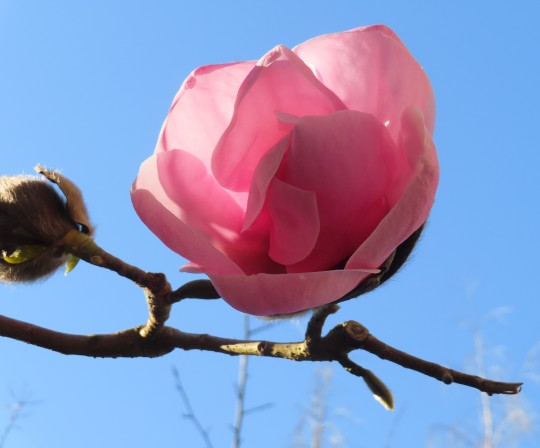

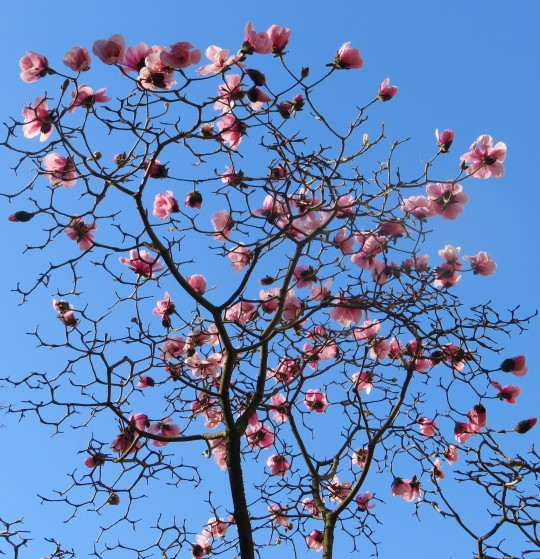
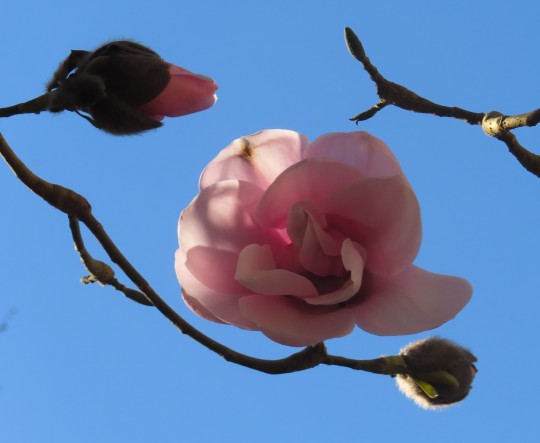
Magnolia campbellii (Campbell's magnolia)
Campbell's magnolia is one of the earliest magnolias to bloom and like the star magnolia (M. stellata), it is a harbinger of spring. This plant is native to sheltered valleys in the Himalayan mountains and is unusually cold tolerant. What a pleasure on a sunny, spring morning, to see a pink magnolia and a blue sky together.
#flowers#photographers on tumblr#magnolia#spring flowers#pink and blue#fleurs#flores#fiori#blumen#bloemen#Vancouver
349 notes
·
View notes
Text
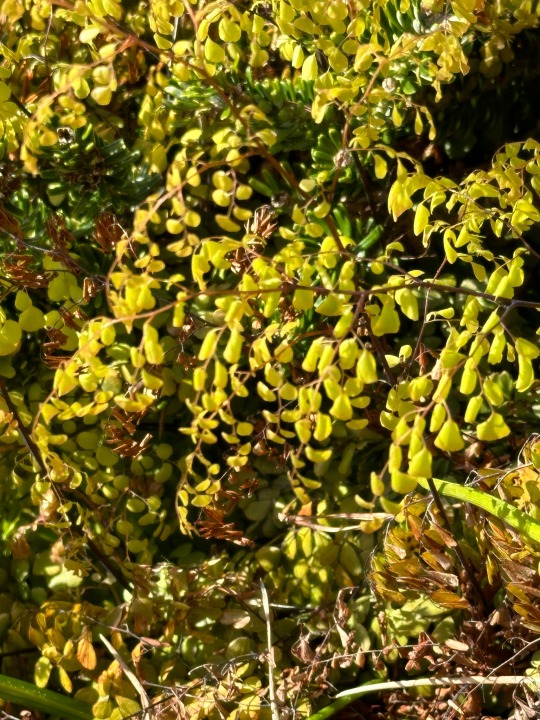
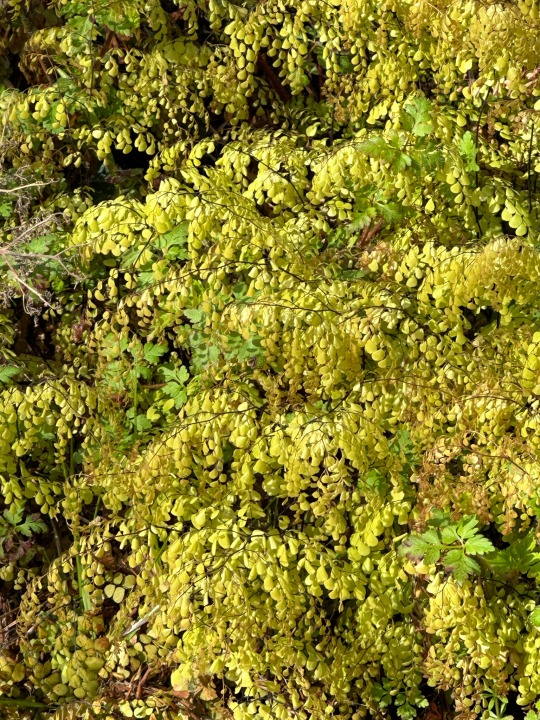

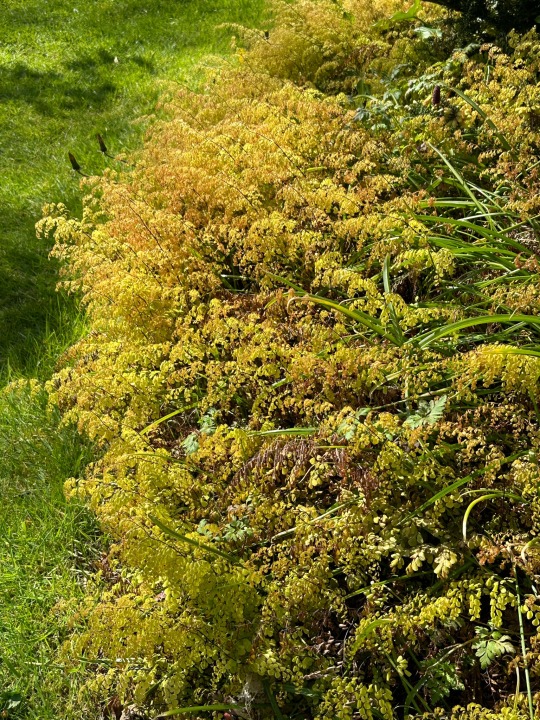
Plant of the Day
Wednesday 15 May 2024
Native to China and the Himalayas Adiantum venustum (evergreen maidenhair fern, Himalayan maidenhair fern) is a deciduous fern but usually remains evergreen to -10 °C when it will be deciduous. This plant needs a moist environment with soil containing a large amount of humus.
Jill Raggett
#Adiantum#evergreen maidenhair fern#Himalayan maidenhair fern#fern#plants#horticulture#garden#gardens#botanic garden#aberdeen#herbaceousperennial
91 notes
·
View notes
Text
Some information about Himalayan Balsam - an easily recognizable invasive plant that is native to India. Foraging this in Europe and North America can be helpful to the local habitat to help prevent the spread! 🌸
64 notes
·
View notes
Text
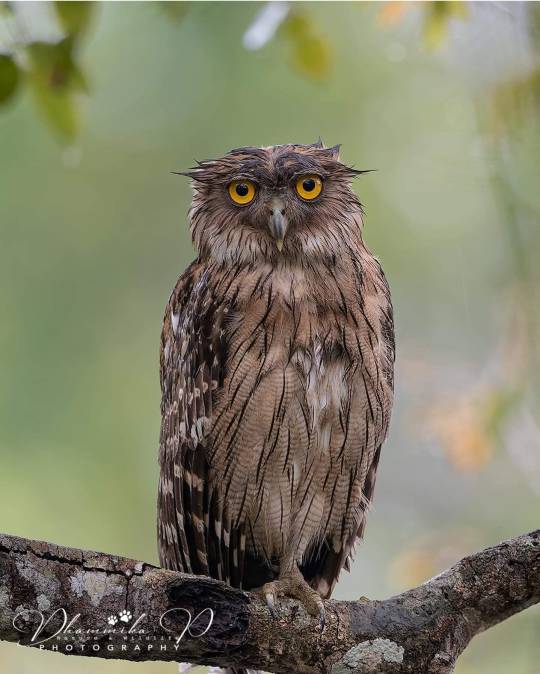
The Brown Fish Owl 🦉
Native to regions spanning from Turkey to South and Southeast Asia, the Brown Fish Owl is a fascinating bird species.
These owls typically inhabit forests and woodlands that border streams, lakes, or rice fields. They are commonly found in lowland areas, ranging from open woodlands to dense forests, as well as in plantations. In the Himalayan foothills, they can be found in submontane forests up to approximately 1,500 meters (4,900 feet) above sea level. During the day, they often seek refuge in stands of bamboo or other large shady trees. Additionally, they are frequently spotted around water reservoirs, along canals, on the outskirts of villages, and along sea coasts.
Captured beautifully by @dhammika_p 📸
64 notes
·
View notes
Text
Today, I went foraging for stinging nettles with my partner, to a patch I haven't been to in years. Unfortunately, in that time Himalayan blackberries (an invasive species) have invaded, shading out the portion of the patch closest to the path. Can't really see it in the picture because the blackberries haven't leafed out yet, but the arching vines are over what used to be the best picking:

So, in addition to picking from a nearby, healthy patch, we cut down the non-native blackberry and pulled out the tip-rooting ends, while leaving the native plants.

That's the pile of blackberry canes. We'll be back in a couple weeks to cut more blackberries, and harvest more nettles. Those cut canes above we brought back to our goats to eat, so they wouldn't have a chance to re-root in the forest.

When I harvest nettles, I take the top bud and the set of open leaves just below. They regrow from the buds below that, so by harvesting, their bloom time is delayed a little, but they still compete their bloom and seed cycle every year. They are also extremely abundant around here, and over much of the world.
54 notes
·
View notes
Text
For #FishFriday:

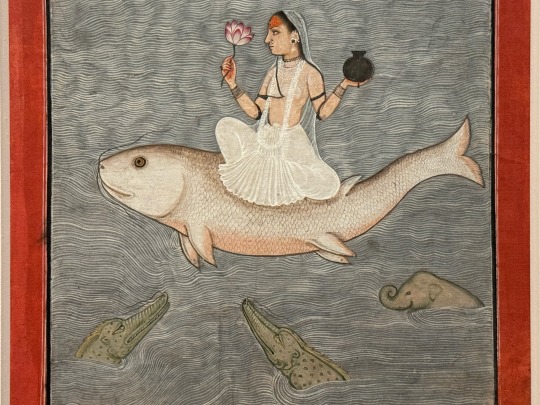

The Goddess Ganga
c. 1650-75
India (Mandi, Himachal Pradesh)
opaque watercolor, gold, & silver on paper
on display at Philadelphia Museum of Art
“The Hindu goddess Ganga personifies India's most important river, the holy Ganges, that begins high in the Himalayan mountains and flows south into the Bay of Bengal. Here she holds a vessel brimming with Ganges water while sitting atop an enormous fish — the humpback mahseer, a species of carp native to the Ganges.
Ganga also holds a lotus flower, a symbol of purity and abundance. Mythical creatures peek from the waves and waterbirds soar across dark monsoon clouds.”
#animals in art#museum visit#bird#birds#birds in art#painting#watercolor#miniature painting#Philadelphia Museum of Art#Indian art#South Asian art#17th century art#Hindu art#fish#Ganga#Ganges#humpback mahseer#species ID
49 notes
·
View notes
Text
Hey! Hey look at this! Vultures eat dead bodies so you don't have to! Go support vultures! They're beautiful animals and important to the environment! They help slow the spread of diseases, and keep the environment clean. Without scavengers like them, the natural world would be littered with diseased and rotting animals. Below are links to several organizations where you can donate to conserve their populations, as well as several pictures and facts about some of the endangered vultures of our world.

Pretty vultures for you!
Bearded vulture:
Near threatened worldwide, but endangered in europe! They cover themselves in red and orange pigment to show status, and thrive in the desert! Their diets are 80% bones, which most scavengers either can't digest, or simply avoid.
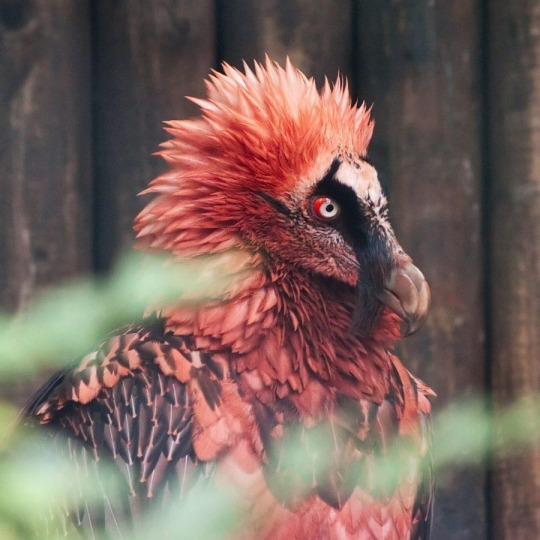


Egyptian vultures:
Also known as the white scavenger or the pharaohs chicken, the endangered egyptian vultures are native to egypt (no surprises there) They were often seen as symbols of purity and motherhood!



Cinereous Vultures
Look. at. them. Endangered, with a decreasing population! These birds are large. seriously, big boys. They can be brown and white, and are also quite floofy! They live in europe and asia, often in mountains!
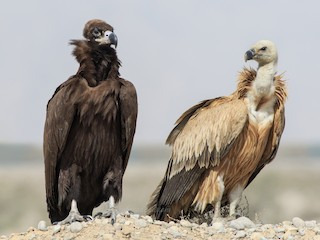
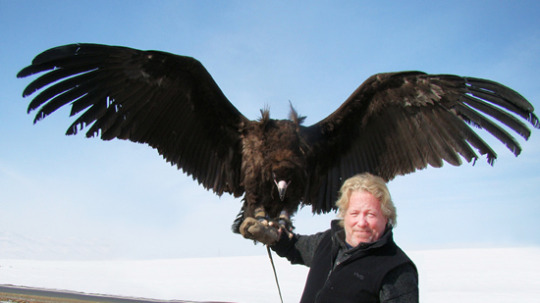
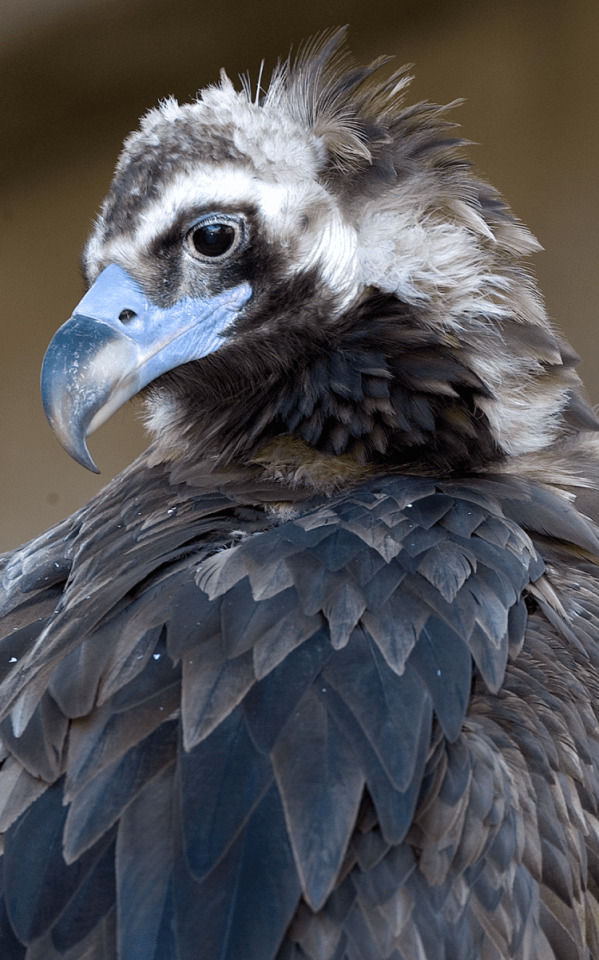
Himalayan Griffon vultures
With a threatened population, the big birds of the mountains. They live on snowy peaks, and are generally docile.
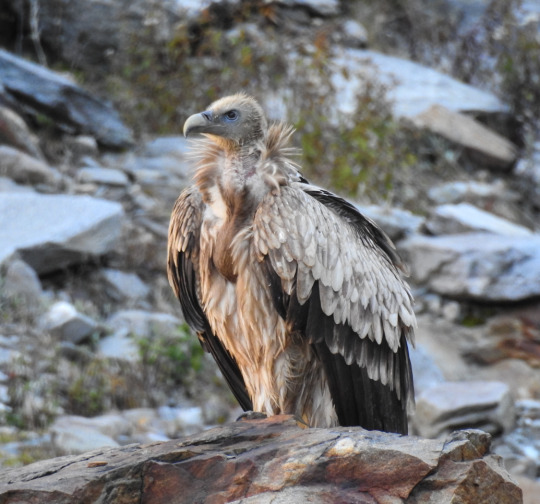

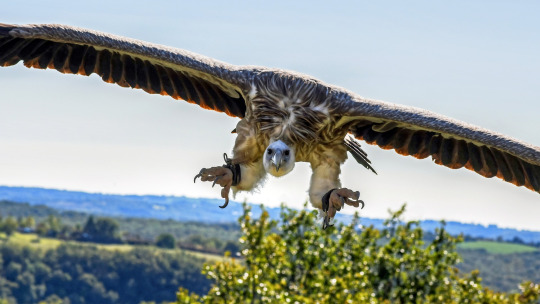
Cape vultures
These all white birdies typically forage in groups, and live in southern africa. They're also at risk, due to lack of food and getting poisoned.
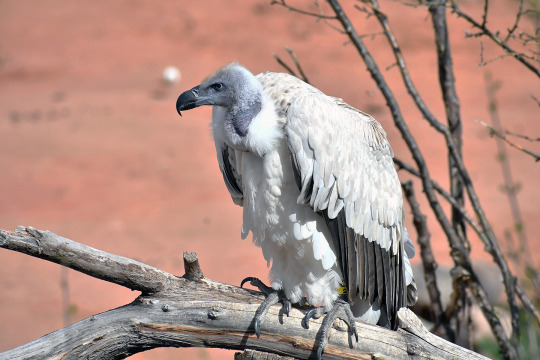


White backed vultures
Another endangered vulture, they often live in desert climates and can have up to 6 foot wingspans.


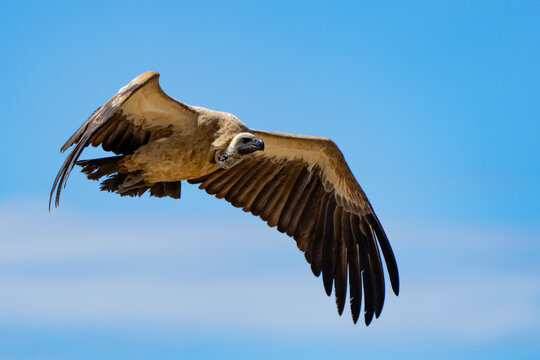
These are not the only endangered vultures! There are many more, listed in the article below.
#local plague doctor#endangered species#endangered#endangered birds#vultures#bearded vulture#white backed vulture#cape vulture#Himalayan griffon vulture#egyptian vulture#cinereous vulture#vulture#vulture community#animal conservation#protect the earth#birds of prey#spread awareness
24 notes
·
View notes
Photo

Legends and myths about trees
Trees in Buddhism (3)
Sal tree (Shorea robusta) – the Nirvana
In Buddhism, there is an important day called 'Sanbutsuki (3 anniversaries of the Buddha)', which commemorates three major milestones in the Buddha's life.
These are Buddhist rituals of the Nativity on 8 April, when Buddha was born, the Jodo-e (becoming a Buddha) on 8 December, when he attained enlightenment, and the Nirvana on 15 February, when he passed away.
The Buddha's death is believed to have occurred on 15 February of the lunisolar calendar in China and Japan, and in many places it is now held on 15 March.
According to Buddhist tradition, the Buddha was lying between a pair of sal trees when he died:
Then the Blessed One with a large community of monks went to the far shore of the Hiraññavati River and headed for Upavattana, the Mallans' sal-grove near Kusinara. On arrival, he said to Ananda (Ref1), the chosen disciple, "Ananda, please prepare a bed for me between the twin sal-trees, with its head to the north. I am tired, and will lie down. (DN16; Nirvana Sutra)"
When the Buddha died in Kusinara, there were 4 or 8 sal trees on the 4 corners of his bed. They were said to have bloomed at the same time, then quickly withered and turned white, just like a flock of cranes.
In Buddhism, the brief flowering of the sal tree is used as a symbol of impermanence and the rapid passing of glory. The sal tree is also said to have been the tree under which Kondana and Vessabhu, respectively the fifth and twenty fourth Buddhas preceding Gautama Buddha, attained enlightenment.
The sal tree (shorea robusta, sāla, shala, sakhua, or sarai), is a species of tree in the family Dipterocarpaceae. The tree is native to India, Bangladesh, Nepal, Tibet and across the Himalayan regions.
The sal tree is mythologically classified as a 'tree of life', symbolising resurrection, rebirth and rejuvenation, but in Buddhism it is one of the three most sacred trees, symbolising parinirvana, as the Buddha died under two sal trees in a row.
The three most sacred Buddhist trees are:
Ashoka tree: the tree where the Buddha was born (Ref).
Bodhi tree: the tree where the Buddha attained enlightenment
Sal tree: the tree where the Buddha died.
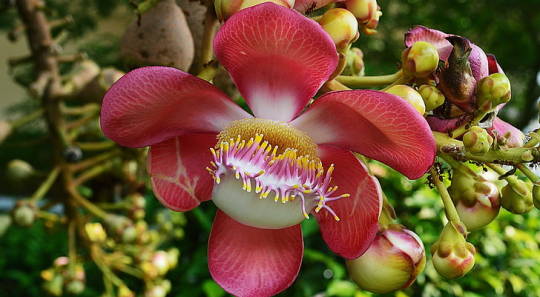
木にまつわる伝説・神話
仏教の樹木 (2)
沙羅双樹 (サラソウジュ) 〜涅槃会 (ねはんえ)
仏教には、ゴータマ・ブッダの生涯における3つの大きな節目を記念する「三仏忌 (さんぶつき)」という大切な日がある。
それが、ブッダが生まれた4月8日の降誕会 (こうたんえ)、悟りを開いた12月8日の成道会(じょうどうえ)、そして入滅した2月15日の「涅槃会(ねはんえ)」。
ブッダの入滅は中国や日本では旧暦2月15日とされ、現在は3月15日に行なわれているところが少なくない。
また、仏教の伝統によると、ブッダは入滅したとき、一対の沙羅双樹 (サラソウジュ) の間に横たわっていた。
その後、大勢の僧侶たちの中から選ばれたアーナンダ(参照1)はヒラニャーヴァティ川の向こう岸に行き、クシナラ近くのマッラ族の沙羅樹の林、ウパヴァッタナへ向かった。到着すると、ブッダはアーナンダに言った。「アーナンダ、2対の沙羅双樹 (サラソウジュ) の間に、頭を北に向けた寝床を用意してください。私は疲れているので、横になります。(DN16; 大般涅槃経)」
ブッダがクシナガラで死去したとき、臥床の四辺に4双8本の沙羅双樹 (サラソウジュ)があった。時じくの花を咲かせ、たちまちに枯れ、白色に変じ、さながら鶴の群れのごとくであったという。
仏教では、沙羅双樹 (サラソウジュ)の木の短い花は、無常と栄光の急速な通過の象徴として使用されることもある。また、沙羅双樹 (サラソウジュ) は、ゴータマ・ブッダに先立つ5番目の仏陀であるコーナニャーと24番目の仏陀であるヴェッサブーが悟りを開いた木であると言われている。
沙羅双樹 (サラソウジュ)はフタバガキ科の樹木の一種で、インド、バングラデシュ、ネパール、チベット、ヒマラヤ地方に自生している。
沙羅双樹 (サラソウジュ)は神話学的には復活・再生・若返りの象徴である「生命の木」に分類されるが、仏教では二本並んだ沙羅の木の下で釈尊が入滅したことから般涅槃の象徴とされ、仏教三大聖樹のひとつである:
無憂樹: 釈迦が生まれた所にあった樹木(参照)
印度菩提樹:釈迦が悟りを開いた所にあった樹木
娑羅双樹:釈迦が亡くなった所にあった樹木
#trees#tree legend#tree myth#trees in buddhism#sal tree#buddha#nirvana#ananda#buddhist rituals#philosophy#nature#art#sacred trees
168 notes
·
View notes